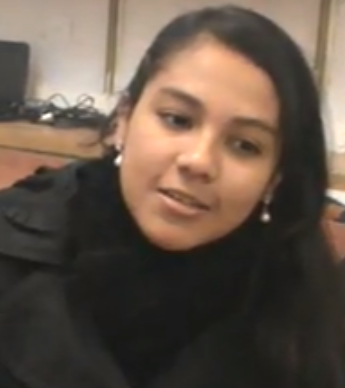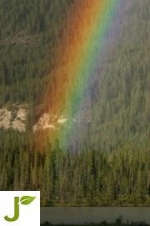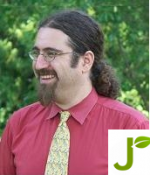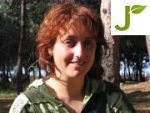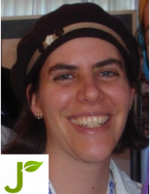Jewish Literacy Subscribe
A selection of initiatives, blogs, resources and communities on Jewcology which focus on jewish literacy.
From the Blogs
Eden Village is hiring farm educator apprentices for 2015 growing season!
Eden Village Camp is Hiring! Submit Your Application About Eden Village Camp: Eden Village Camp aims to be a living model of a thriving, sustainable Jewish community, grounded in social responsibility and inspired Jewish spiritual life. By bringing the wisdom of our tradition to the environmental, social, and personal issues important to today’s young people, we practice a Judaism that is substantive and relevant. Through our Jewish environmental and service-learning curricula, joyful Shabbat observance, pluralistic Jewish expression, and inspiring, diverse staff ...
R&R Shabbat at the JCC
R & R: Shabbat at The JCC is an antidote to our 24/7 lifestyle. Make your Shabbat afternoon special and share in our community with workshops in art, yoga, meditation, food, music, study sessions, film, performances, creative art projects, spa experiences, and indoor and outdoor play. Enjoy programs for both children and adults. R&R is an amazing weekly opportunity to be together as a family and as a community; it’s an incredible alternative to the typical New York Saturday and it is our gift to you. Join us for programs that respect all levels of observance. ...
#Yemima, Rachel Imeinu and the Merit of Righteous Women
"When Moshiach [the Messiah] comes, I will be the first to rise up and be in the Holy Temple."
Out of the ark and into the garden: The story of Noah in the Sabbatical year
There are three places in the Torah which talk about human beings and the animals – including wild animals – sharing one food supply. In Eden, in the ark during the flood, and in the Sabbatical year or Shmita. There’s a lot more to these stories, but you don’t really need to know much more to understand the basic message of the Torah. We lived with the wild animals once, rather than carving out separate spaces for us and our domesticated fellow travelers. According to the Torah, that is the real truth, and all the owning and property and buying and selling is an ...
The MAP: Sukkot (and Shmita) Resources and Events
SUKKOT AND SHMITA RESOURCES AND EVENTS contributed by all the organizations and initiatives on “the Map” http://jewcology.org/map-of-initiatives/ Here’s a quick bit of Sukkot Torah to start us off: “The four species of the lulav represent the four types of ecosystems in the land of Israel: desert (date palm), hills (myrtle), river corridors (willow), and sh’feilah, the lowlands (etrog). Each species has to be fresh, with the very tips intact – they can’t be dried out, because they hold the water of last year’s rain. Together, they make a kind of map ...
Jewish literary theorist coins ‘cli fi’ genre term for climate change awareness
Danny Bloom grew up in western Masschusetts in the 1950s, studied Jewish ideas under Rabbi Samuel Dresner, was bar-mitvahed in 1962 under the cantorial direction of Cantor Morty Shames and then started travelling. France, Israel, Greece, Italy, Alaska and Japan. Now he's 65 and working on what he calls a very Jewish project, Jewish because it comes out of ideas and values about having a vision and being a dreamer that he picked up on his way to becoming a bald, goateed senior citizen. Bloom lives in Asia now working as a public relations writer and ...
Print books, even ebooks, are dead; but movies can still work their magic
by Danny Bloom, CLI FI CENTRAL blogger http://pcillu101.blogspot.com danbloom@gmail.com bubbie.zadie@gmail.comLOS ANGELES -- With films like "Noah" and "Into the Storm" and "Snowpiercer" -- and"Interstellar" coming in the late fall -- Hollywood has seen thehandwriting on the wall and embraced climate themes in fulltechnicolor. Call the movies ''cli fi'' or disaster thrillers,whatever. There's more to come in the film world.But while Hollywood and studio marketing people (and online socialmedia reporters covering new film releases) have welcomed ''cli fi'' intothe ...
Uplifting People and Planet
Exciting news! Just in time for Tu b’Shevat, Canfei Nesharim and Jewcology are proud to announce the launch of a new ebook exploring traditional Jewish teachings on the environment, Uplifting People and Planet: Eighteen Essential Jewish Lessons on the Environment, edited by Rabbi Yonatan Neril and Evonne Marzouk. This ebook is the most comprehensive study in English of how Jewish traditional sources teach us to protect our natural resources and preserve the environment. From food to trees, energy to water, wealth to biodiversity, the book studies eighteen ...
The Natural Bible
For anyone interested in Bible study, nature, the environment or religion, this unique and valuable resource elucidates the connections between Judaism and the natural world. The Natural Bible explores how religious environmental values can help us have a healthier relationship with the earth, and at the same time, how an appreciation of the natural environment enriches our understanding of the biblical text’s use of metaphors from the natural world. Topics include sustainability and stewardship, our relationship with living creatures and God’s creation, and ...
Shabbat Noach is Coming!
In celebration of Parshat Noach this coming Shabbat, Jewcology is proud to share a wealth of resources on the topic of Noach. Please enjoy and share these resources from many of our partners and participants so we can all benefit from the lessons of Parshat Noach. Explore all of our Parshat Noach resources Here's a sampling: Countering Destruction - Lessons from Noah Although the flood and the life of Noah occurred thousands of years ago, the story of Noah offers important lessons about how our actions affect the world. The Torah teaches that ten generat...
PONDERING FREEDOM ON THE EQUINOX
The main theme of the upcoming holiday of Pesach is the issue of Freedom, in all its complexity. The Jewish people are brought out of slavery in Egypt (literally Mitzrayim, or narrow place) and we are commanded to remember this act of deliverance by G-d, and to teach it to our children. We are supposed to keep this memory of redemption always in our thoughts and words; the daily prayers and the Sabbath blessing over the wine contain passages remembering our deliverance from Egypt by G-d. It is during Passover, however, that this theme takes on the central signific...
It’s Purim, Stand Up For What You Believe In!
Today is Purim, a strange holiday in Jewish tradition as we are told to get drunk, dress up and act crazy. Plus, throughout the entire book of Esther, G-d who usually features heavily in our texts, never appears. So what is Purim all about? This year upon reading the Megillah, I was struck by something in particular. Every major character in this story, goes out of his or her way to fight for what he or she believes in, even when it is inconvenient, dangerous or unlikely. This is true not only for our heroes and heroines, but also for the villains too. Vashti ...
Hidden Inside Names
I love how Purim teaches that our names carry depth and meaning. Take Esther our queen and star. Her very name in Persian means star. In Hebrew, her name means hidden and sure enough she not only hides her Jewish identity, but like a serious secret agent, also her intentions. Did you remember that she is actually given two names? “He brought up Hadassah, who is also Esther, his uncle’s daughter…” (Megillah Esther, 2:7). The name Hadassah, Hebrew for myrtle, brings to mind the lovely myrtle tree, with smallish star shaped flowers and ...
A Jewish Environmental Proclamation
When God created the first human beings, God led them around the Garden of Eden and said: “Look at my works! See how beautiful they are – how excellent! For your sake I created them all. See to it that you do not spoil and destroy My world; for if you do, there will be no one else to repair it. - Midrash Kohelet Rabbah 1 (on Ecclesiastes 7:13) We are witnessing a time in which the future of the planet is at stake. The climate crisis is escalating, and it is upon each one of us to do what we can to change course. In the Torah it is ...
Mysticism and Making a Difference: Tu b’Shevat in Silver Spring
My local community group, the Kayamut Silver Spring Sustainability Circle, held our Tu b'Shevat Seder on February 7. It was the first time in a long time that I hosted a Tu b'Shevat Seder that was actually on Tu b'Shevat. So I wanted to make it special. Instead of being a mock seder or a model seder, it was a real seder and an opportunity to experience Tu b'Shevat for itself. I know that Tu b'Shevat has mystical meaning in addition to the more modern, environmental meaning we've given to it. For this seder, I wanted to blend a little of ...
Take an online, college-accredited course on Judaism and the environment!
Introducing an online, college-accredited course on Judaism and the environment! The course, ‘A Jewish Perspective on Environmental Sustainability,’ relates to contemporary environmental issues from the lens of Jewish teachings. The units covered include the Garden of Eden and a stewardship paradigm; Jewish sources on agriculture and globalized food production today; and the Torah’s injunction not to waste in regards to food and energy waste in modern society. The course is being offered by the New York-based Theological Research ...
Equity or the Flood: Two Visions of Justice
It is now seven weeks to Passover and the Passover foods are already for sale in my local supermarket. My family is already planning when to do our shopping and whom to invite to the seder. Like many Jewish families, we put a lot of time and preparations into this holiday because we want to make it special and different from the rest of the year as was done when we were children. But our preparations are not only about shopping, cooking, invites and the changeover of dishes. Every year, we spend at least a little time considering what we ...
When is the right time?
I was having a good deal of trouble figuring out what I wanted write about this month on Jewcology. As I was searching for a topic I thought about doing a search for Jewish environmental poetry. The first passage that came up in my search was the following: Kohelet (Ecclesiastes) 3:1-8 For everything there is a time and a season for every experience under the heavens: A time to birth and a time to die, A time to plant and a time to uproot the planted; A time to kill and a time to heal, A time to breach and a time to build; A time to cry and a ...
Tu B’Shevat Saplings
Dear Friends, Our cliffhanger (see part 1 here ) left us with the Tree of Life and the Tree of Knowledge firmly planted not within Tu B’Shevat, but within the middle of Mi Chamocha our blessing-song for redemption. Mi Chamocha is invoked in every prayer service directly after the Shema. We’ll begin by trying to make sense of this very old word, redemption, and then offer some ideas why Reb Elimelech of Grodzisk (d. 1892) might have placed his wisdom of the two trees there. Ready to wade in the water? As we get our toes wet, let’s first ...
Why Tu B’shvat Matters in 2012
The economy is in crisis across much of the USA and Europe, governments are killing their citizens in Syria and Bahrain, and organized crime is dominating Mexico and Central America… This Tu B’shvat how can we worry about environmental issues, when there are so many pressing social issues face our society? Indeed, environmental concerns seem to be fairly low on the international priorities list these days. Look at the recent failure of the Durban conference, in which governments, (most notably my own Conservative Canadian government), were unwilling ...


